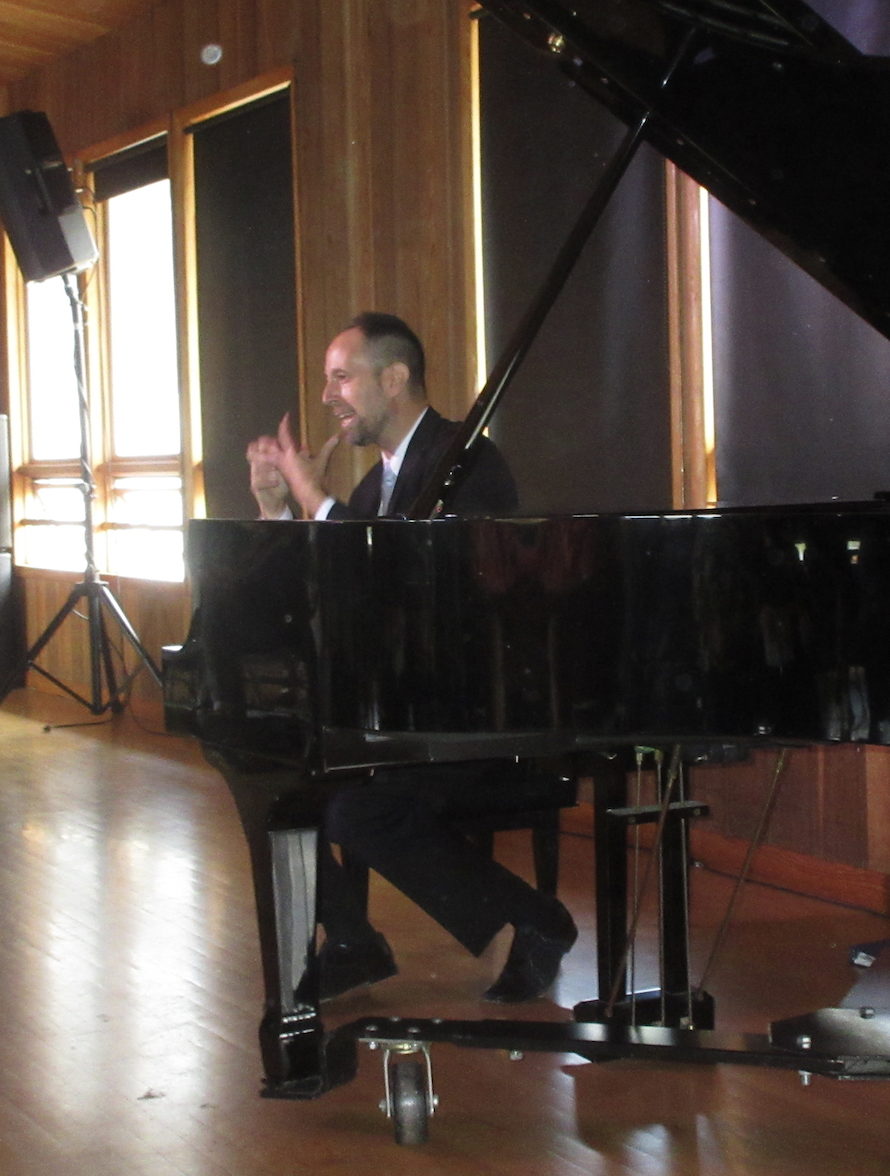|
Recital
MUSICAL POT POURRI AT SPRING LAKE VILLAGE RECITAL
by Terry McNeill
Friday, January 31, 2025
Recital
TWO AND FOUR HANDS DELIGHT AT THE 222
by Nicki Bell
Sunday, January 19, 2025
Recital
LARGE AUDIENCE HEARS AX IN WEILL PIANO RECITAL
by Terry McNeill
Thursday, October 24, 2024
Recital
SPANISH MUSIC AT SPRING LAKE VILLAGE
by Terry McNeill
Wednesday, September 18, 2024
Recital
SCHUMANN FANTASIE AT SCHWARTZ'S MEMDOCINO FESTIVAL
by Terry McNeill
Tuesday, July 23, 2024
Recital
ELEGANT VOCAL MASTERY AT ROSES SIGNATURE RECITAL
by Pamela Hicks Gailey
Sunday, February 25, 2024
Recital
DEMANDING SCHUMANN WORK IN MUSIC AT OAKMONT RECITAL
by Terry McNeill
Thursday, November 9, 2023
Recital
FRENCH FLAVOR IN RARE FOUR-HAND RECITAL
by Judy Walker
Sunday, January 15, 2023
Recital
ASSERTIVE PIANISM IN YAKUSHEV'S OCCIDENTAL RECITAL
by Terry McNeill
Sunday, November 13, 2022
Recital
HEROIC LIM PERFORMANCE AT STEINWAY SOCIETY RECITAL
by Abby Wasserman
Sunday, September 18, 2022
|
 |
 Spencer Myer July 14 in Preston Hall |
AGGRESSIVE PIANISM IN MYER'S MENDO FESTIVAL RECITAL
by Terry McNeill
Thursday, July 14, 2022
Indiana-based pianist Spencer Myer has been a welcome Mendocino Music Festival performer since 2010, and he renewed his personal connection with North Coast piano buffs July 14 in a short recital in Mendocino’s Preston Hall.
The afternoon was a mixed success, with Beethoven’s E Minor Sonata (Op. 90) opening the program before 75 listeners. In his remarks from the stage the artist mentioned the 1814 work as a threshold to the majestic five late Sonatas, and in many ways the opening movement playing reflected the drama that was to begin with the Op. 101 Sonata in A. There was assertive half pedaled scale playing and the Hall’s instrument (a rare Falcone 225) had a bright top end carried overly well. The lyrical Rondo unfolded in a straightforward manner, without much warmth of subtlety or phrase.
Throughout the recital Mr. Myer was in an exuberant mood, playing with considerable volume that in the small space produced more than adequate sound, and for the first few rows of attendees sitting seven feet from the piano, quite a sonic impact for some. In Debussy’s early Pour le Piano Suite the big march and glissandos were well played, and Mr. Myer built the stately chords of the Saraband with admirable control. There was clarity in the brilliant concluding Toccata, at a fast clip throughout, and the thunderous final four chords rang out and generated loud applause.
Following a brief pause Mr. Myer spoke of Chopin’s Impromptus and began with the A Flat that received a noisy, punched out performance that at the chosen tempo almost went off the rails. But not quite, and the added trill in the sostenuto and an inner voice in the recapitulation were welcome. The F Sharp was played aggressively with the final two chords fortissimo.
With the foregoing intense playing the G Flat (Op. 51) was a surprise, the pianist capturing the work’s nostalgia in a judicious tempo, albeit with limited rubato and limited tonal color. It was a nice contrast to the final C Sharp (Op. 66) performance, played very fast and lacking in clarity. Perhaps ratcheting back the tempo, or better articulation, would have made the popular work with the poetic middle section more convincing.
Two great Granados pieces from Goyescas ended the recital, El Amor y la Muerte and Los Requiebros, played from score. The playing in the first had the requisite Spanish flavor and rhythms but was too loud, the splendid operatic themes played with bass-heavy chords and a lovely mysterious ending. Mr. Myer let some air into the Requiebros (“flattery”) and charm returned to his playing, as did off-beat accents and perfectly graded decrescendos and piquant Catalan harmonies.
An encore was offered, the softly lilting E Flat Intermezzo from Brahms’ Op. 117, and the reading eschewed the usually-heard folk song dreaming and had a husky character and dynamic contrasts.
|

